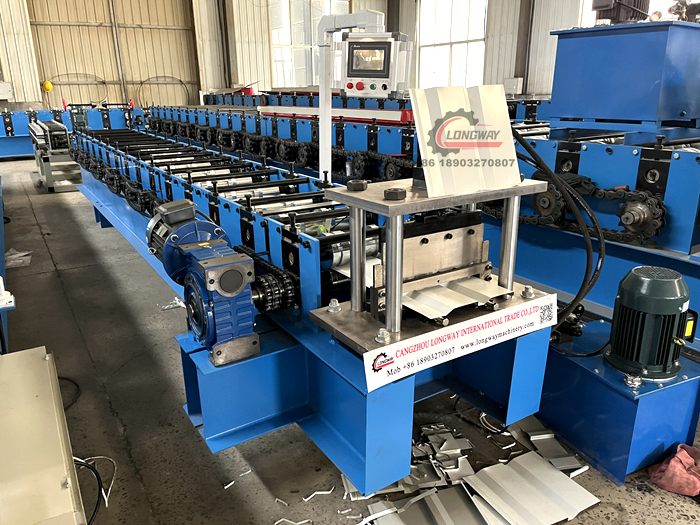Innovative Cap Shape Roll Forming Machine for Efficient Production and Design Flexibility
Understanding Capping Roll Forming Machines A Comprehensive Overview
Capping roll forming machines play a crucial role in the manufacturing of various metal products, particularly in the construction and automotive industries. These machines are designed to produce capping profiles—commonly used for roof edges, walls, and various architectural applications—by continuously shaping metal strips into desired forms.
The Basics of Roll Forming
Roll forming is a continuous bending process in which metal strips are passed through a series of rollers that incrementally shape the material. This process is ideal for producing long lengths of uniform cross-sectional shapes, which makes it highly efficient and cost-effective for mass production. The capping roll forming machine specifically targets the production of capping profiles, which are integral to stabilizing and securing materials, particularly in outdoor environments.
Key Components of Capping Roll Forming Machines
1. Material Feeding System The initial stage involves feeding the metal sheet into the machine. This is typically done using a decoiler, which unwinds the metal coil and holds it in place for the subsequent forming operations.
2. Roll Forming Station This is the heart of the machine, where the actual forming takes place. The strip of metal is passed through a series of rollers, each designed to progressively bend and shape the material into the final capping profile. The precise design of these rollers is essential for achieving the desired shape and thickness.
3. Cutting System Once the capping profile is formed, it needs to be cut to specific lengths. This can be achieved through various methods, including flying saws or shear systems activated at predetermined intervals.
4. Control System Modern capping roll forming machines are equipped with advanced control systems that allow for precise monitoring and adjustment of the forming process. Programmable logic controllers (PLCs) are commonly used to enhance automation, ensuring consistency and high-quality output.
5. Output Table After cutting, the finished capping profiles are guided onto an output table where they can be collected and further processed, including stacking, banding, or packaging.
capping roll forming machine

Benefits of Capping Roll Forming Machines
- Efficiency Capping roll forming machines are highly efficient, capable of producing thousands of linear feet of product in a short period. This is particularly advantageous for large construction projects that require significant quantities of material.
- Precision The structure of roll forming machines allows for tight tolerances in product dimensions, ensuring that the final output meets exact specifications.
- Material Versatility These machines can work with a variety of materials, including steel, aluminum, and other alloys. This versatility makes them suitable for a range of applications beyond just capping profiles.
- Cost-Effectiveness By reducing material waste and lowering labor costs through automation, capping roll forming machines provide a cost-effective solution for manufacturers.
Applications of Capping Profiles
Capping profiles manufactured using roll forming machines have diverse applications. In construction, they are often used as edge trims for roofs and walls, providing a protective barrier against the elements. In the automotive industry, these profiles can be found in various components that require structural reinforcement. Other applications include fencing systems, signage, and more—demonstrating the adaptability of these products to various sectors.
Conclusion
Capping roll forming machines are essential tools in modern manufacturing, particularly for producing high-quality capping profiles. Their ability to efficiently convert metal strips into precisely shaped components highlights the importance of innovation and technology in the manufacturing sector. As industries continue to evolve, the role of such specialized machinery is likely to increase, ensuring the production of durable and reliable products that meet the demands of a growing market. Whether in construction, automotive, or beyond, the benefits of capping roll forming machines cannot be understated, making them a valuable investment for manufacturers looking to enhance their production capabilities.
-
Roof Panel Machines: Buying Guide, Types, and PricingNewsJul.04, 2025
-
Purlin Machines: Types, Features, and Pricing GuideNewsJul.04, 2025
-
Metal Embossing Machines: Types, Applications, and Buying GuideNewsJul.04, 2025
-
Gutter Machines: Features, Types, and Cost BreakdownNewsJul.04, 2025
-
Cut to Length Line: Overview, Equipment, and Buying GuideNewsJul.04, 2025
-
Auto Stacker: Features, Applications, and Cost BreakdownNewsJul.04, 2025
-
Top Drywall Profile Machine Models for SaleNewsJun.05, 2025








